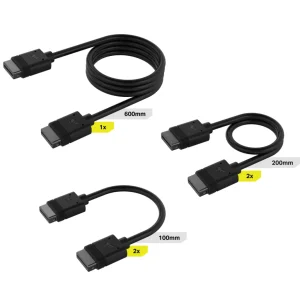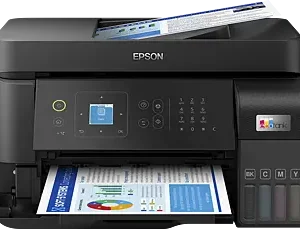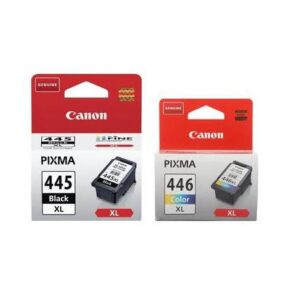Bonolo Online
Brother Toner Cartridges: The Best Way to Improve Your Printing Quality
Quality, efficiency, and reliability are crucial when it comes to printing. Whether you’re printing business documents, reports, or marketing materials, Brother toner cartridges offer unmatched performance. Designed for Brother laser printers, these cartridges deliver crisp, high-resolution prints, long-lasting durability, and cost-efficient operation.
This guide explores why Brother toner cartridges are the best choice, how they improve print quality, their different types, and how to choose the right one for your needs.
Why Choose Brother Toner Cartridges?
Brother toner cartridges are engineered to work seamlessly with Brother laser printers, ensuring the best possible printing experience. Here are a few reasons why they stand out:
- Exceptional Print Quality: Brother toner cartridges produce sharp, clear text and vibrant images, making them ideal for professional documents, brochures, and high-resolution prints.
- Consistent Performance: Designed specifically for Brother laser printers, these cartridges ensure consistent and even toner distribution, preventing smudges, streaks, and faded prints.
- High Page Yield and Cost Efficiency: Brother toner cartridges come in standard, high-yield, and super high-yield options, helping users save money by printing more pages per cartridge.
- Genuine vs Compatible Toner: While third-party toner cartridges may seem like a cost-effective alternative, genuine Brother toner cartridges guarantee better performance, reliability, and longevity, reducing the risk of printer damage or voiding warranties.
Types of Brother Toner Cartridges
Brother offers a range of toner cartridges, each tailored to different printing needs.
Standard-Yield Toner Cartridges
- Ideal for home users or small offices with low to moderate printing needs.
- Prints fewer pages but offers affordable upfront costs.
- Example: Brother TN-221 (Black, Cyan, Magenta, Yellow).
High-Yield Toner Cartridges
- Perfect for businesses and high-volume printing environments.
- Offers lower cost-per-page and reduces the frequency of cartridge replacements.
- Example: Brother TN-660 High-Yield Black Toner.
Super High-Yield Toner Cartridges
- Best for large offices and heavy-duty printing needs.
- Prints twice as many pages as high-yield cartridges, maximising efficiency.
- Example: Brother TN-850 Super High-Yield Black Toner.
Brother Drum Units vs Toner Cartridges
- Toner Cartridges contain toner powder and need replacement when they run out.
- Drum Units transfer the toner onto paper and last longer than toner cartridges.
Some Brother models use separate drum units and toner cartridges, while others have integrated designs.
How to Choose the Right Brother Toner Cartridge
- Check Your Printer Model: Always confirm your printer’s model number and choose a compatible Brother toner cartridge.
- Determine Your Printing Needs: Standard-yield toner is ideal for low-volume printing, while high-yield toner is perfect for regular office use.
- Consider Cost-Per-Page Efficiency: High-yield and super-high-yield toners reduce long-term printing costs, making them ideal for bulk printing.
- Choose Genuine Brother Toner for Best Performance: Avoid third-party or counterfeit cartridges, as they may cause streaking, poor-quality prints, or even printer damage.
Tips for Maximising Brother Toner Cartridge Lifespan
- Use Printer Settings Wisely: Set your printer to draft mode for internal documents to conserve toner.
- Store Toner Properly: Keep cartridges in a cool, dry place to prevent clumping and deterioration.
- Shake the Cartridge: If prints start fading, gently shake the toner cartridge to redistribute the toner evenly.
- Regular Printer Maintenance: Clean the drum unit and rollers periodically to prevent toner buildup.
FAQs About Brother Toner Cartridges
How many pages can a Brother toner cartridge print?
- Page yield varies based on cartridge type:
- Standard yield: Around 1,000 – 1,500 pages.
- High-yield: Around 2,500 – 3,000 pages.
- Super high-yield: 4,000+ pages.
Are Brother toner cartridges refillable?
While some third-party companies offer refilling services, refilling toner cartridges may affect print quality and void Brother printer warranties.
How do I know when to replace my Brother toner cartridge?
Your printer will typically display a “Low Toner” warning. You may also notice fading prints or streaking, indicating the need for replacement.
Can I use generic or third-party toner cartridges in a Brother printer?
While generic toners may work, they can cause printer malfunctions, reduced print quality, and even void warranties. Genuine Brother toner cartridges are recommended.
What is the difference between a Brother toner cartridge and a drum unit?
A toner cartridge contains the toner powder, while a drum unit transfers the toner to paper. Some models have separate drum and toner units, while others combine both.
Why is my Brother printer saying “Replace Toner” even after installing a new cartridge?
This could be due to:
- Improper cartridge installation
- A reset is needed in the printer settings
- A defective cartridge (only occurs with third-party toner in most cases)
Contact Bonolo Online for details
Investing in genuine Brother toner cartridges ensures exceptional print quality, consistent performance, and cost-effective printing. Whether you’re running a home office, small business, or large enterprise, choosing the right toner cartridge can boost productivity while reducing printing costs.
Make the smart choice today—opt for Brother toner cartridges and experience top-tier printing quality!
Please contact us for more information about our Brother toner cartridges. Alternatively, please browse our website.




